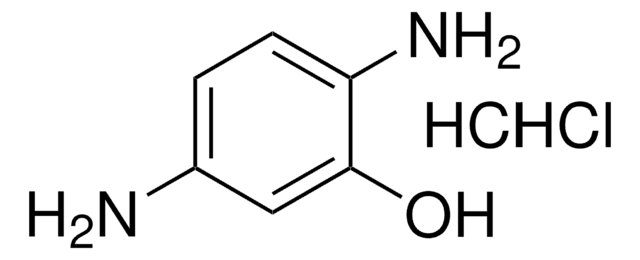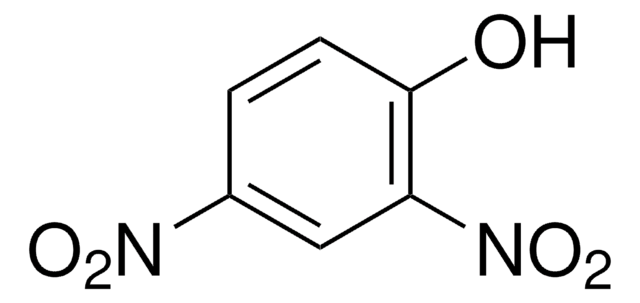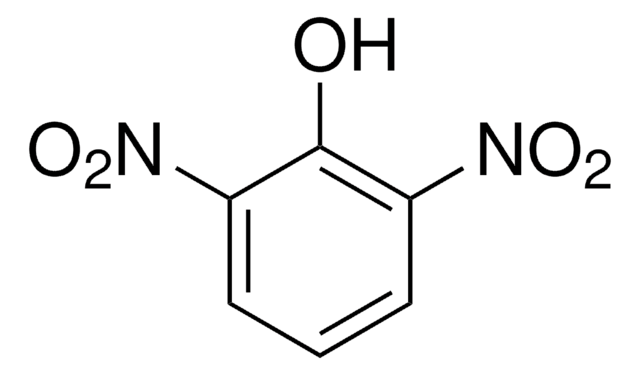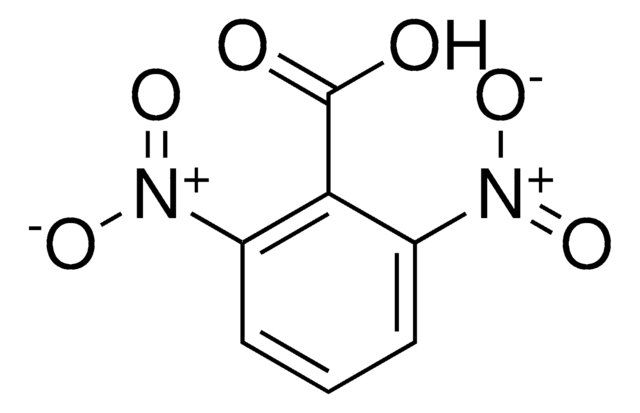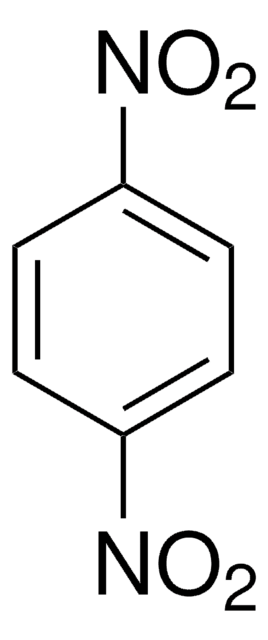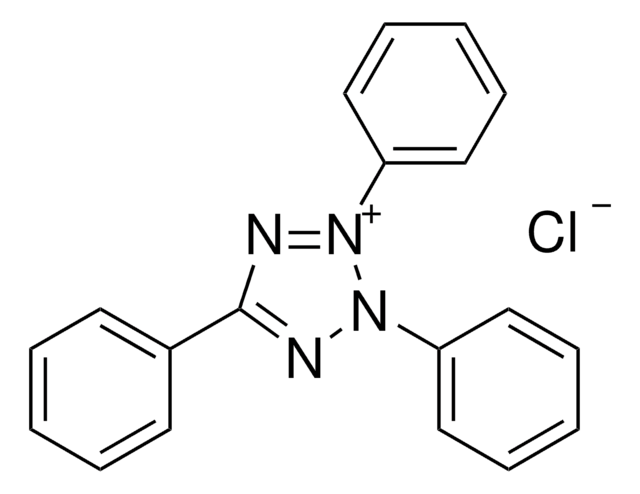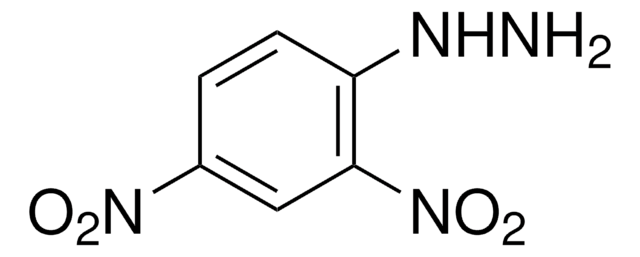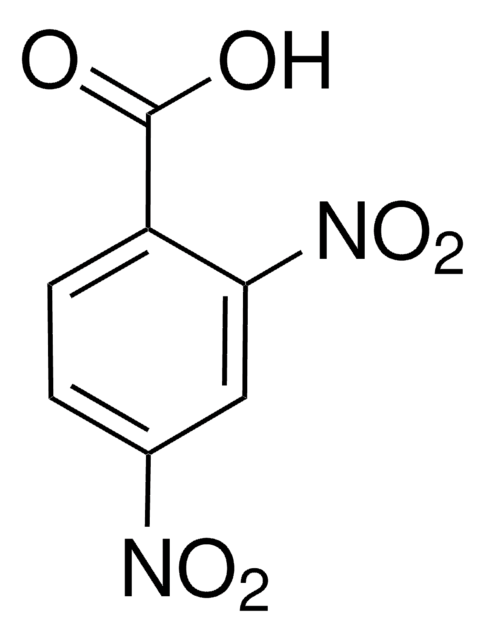D198609
2,5-Dinitrophenol
97%
Synonym(s):
γ-Dinitrophenol
Sign Into View Organizational & Contract Pricing
All Photos(1)
About This Item
Linear Formula:
(O2N)2C6H3OH
CAS Number:
Molecular Weight:
184.11
Beilstein:
1913411
EC Number:
MDL number:
UNSPSC Code:
12352100
PubChem Substance ID:
Recommended Products
Assay
97%
contains
5-25% water
technique(s)
titration: suitable
mp
103-106 °C (lit.)
SMILES string
Oc1cc(ccc1[N+]([O-])=O)[N+]([O-])=O
InChI
1S/C6H4N2O5/c9-6-3-4(7(10)11)1-2-5(6)8(12)13/h1-3,9H
InChI key
UWEZBKLLMKVIPI-UHFFFAOYSA-N
Looking for similar products? Visit Product Comparison Guide
Signal Word
Danger
Hazard Statements
Precautionary Statements
Hazard Classifications
Acute Tox. 3 Dermal - Acute Tox. 3 Inhalation - Acute Tox. 3 Oral - Aquatic Chronic 2 - STOT RE 2
Storage Class Code
4.1B - Flammable solid hazardous materials
WGK
WGK 3
Personal Protective Equipment
dust mask type N95 (US), Eyeshields, Gloves
Regulatory Information
新产品
Choose from one of the most recent versions:
Already Own This Product?
Find documentation for the products that you have recently purchased in the Document Library.
L V Bronov et al.
Antibiotiki, 26(1), 24-28 (1981-01-01)
Possible use of dinitrophenol reaction with amines in quantitative determination of amines and amino sugars in various antibiotics was investigated. It was found that the reaction with 2,5-dinitrophenol (2,5-DNP) in dimethylsulfoxide (DMSO) providing the highest batochromic shift in the electron
Surendra Vikram et al.
PloS one, 8(12), e84766-e84766 (2014-01-01)
Biodegradation of para-Nitrophenol (PNP) proceeds via two distinct pathways, having 1,2,3-benzenetriol (BT) and hydroquinone (HQ) as their respective terminal aromatic intermediates. Genes involved in these pathways have already been studied in different PNP degrading bacteria. Burkholderia sp. strain SJ98 degrades
Our team of scientists has experience in all areas of research including Life Science, Material Science, Chemical Synthesis, Chromatography, Analytical and many others.
Contact Technical Service